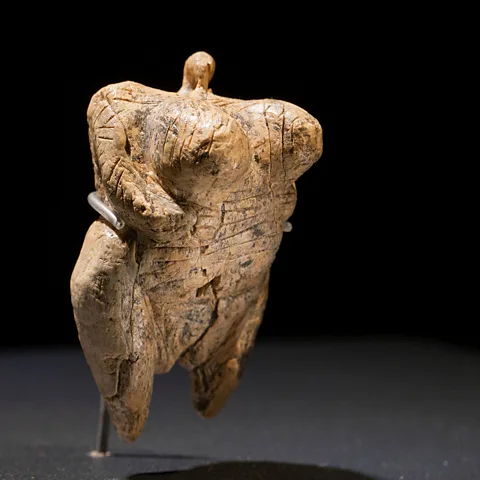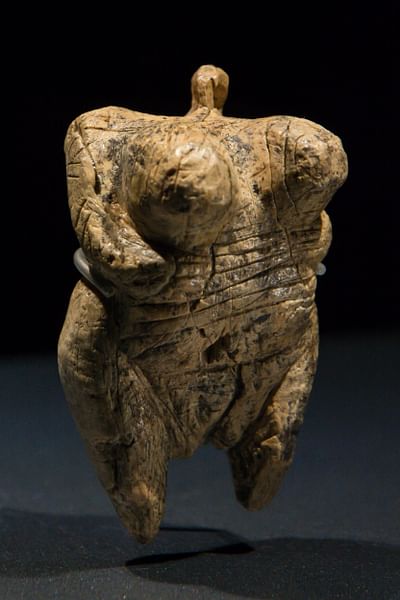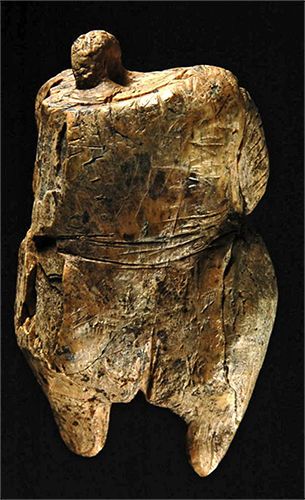Introduction
Discovered in 2008 in the Hohle Fels cave near Schelklingen, Germany, the Hohle Fels Venus is the oldest known depiction of a human figure, dating back approximately 40,000 years. Carved from mammoth ivory, this remarkable artifact provides invaluable insights into the creativity and symbolic thinking of early modern humans.

A Unique Artistic Achievement
Measuring around 6 centimeters in height, the Venus figurine features exaggerated anatomical traits such as large breasts and wide hips, suggesting its likely role as a fertility symbol. The absence of a head and the detailed focus on the body highlight an intentional abstraction, emphasizing themes of reproduction and survival over individual identity.

The use of mammoth ivory as a medium reflects the technical expertise of the Aurignacian culture, a period known for its advances in art, music, and symbolic expression. The intricate craftsmanship required to carve such a piece demonstrates the high level of skill and creativity of its creators.
Context and Cultural Significance
The Hohle Fels Venus belongs to the Swabian Jura, a region rich in prehistoric artifacts, including the Löwenmensch figurine and the world’s oldest flutes. These finds collectively underscore the area’s importance as a center of cultural and artistic innovation during the Upper Paleolithic period.

The figurine’s symbolic focus on fertility suggests it may have been used in rituals or as a talisman to ensure the survival and prosperity of its community. Similar Venus figurines found across Europe reinforce the idea that fertility and reproduction were central themes in early human art.
Legacy
Now housed at the Prehistoric Museum of Blaubeuren, the Hohle Fels Venus continues to captivate scholars and visitors alike. It stands as a testament to humanity’s earliest attempts to represent and understand the world through art, connecting us to our ancestors’ creative and symbolic roots.

Conclusion
The Hohle Fels Venus is more than a prehistoric artifact—it is a profound symbol of humanity’s cognitive and artistic evolution. As the oldest known human representation, it offers a timeless link to the origins of creativity, inspiring awe and curiosity about the dawn of human expression.

